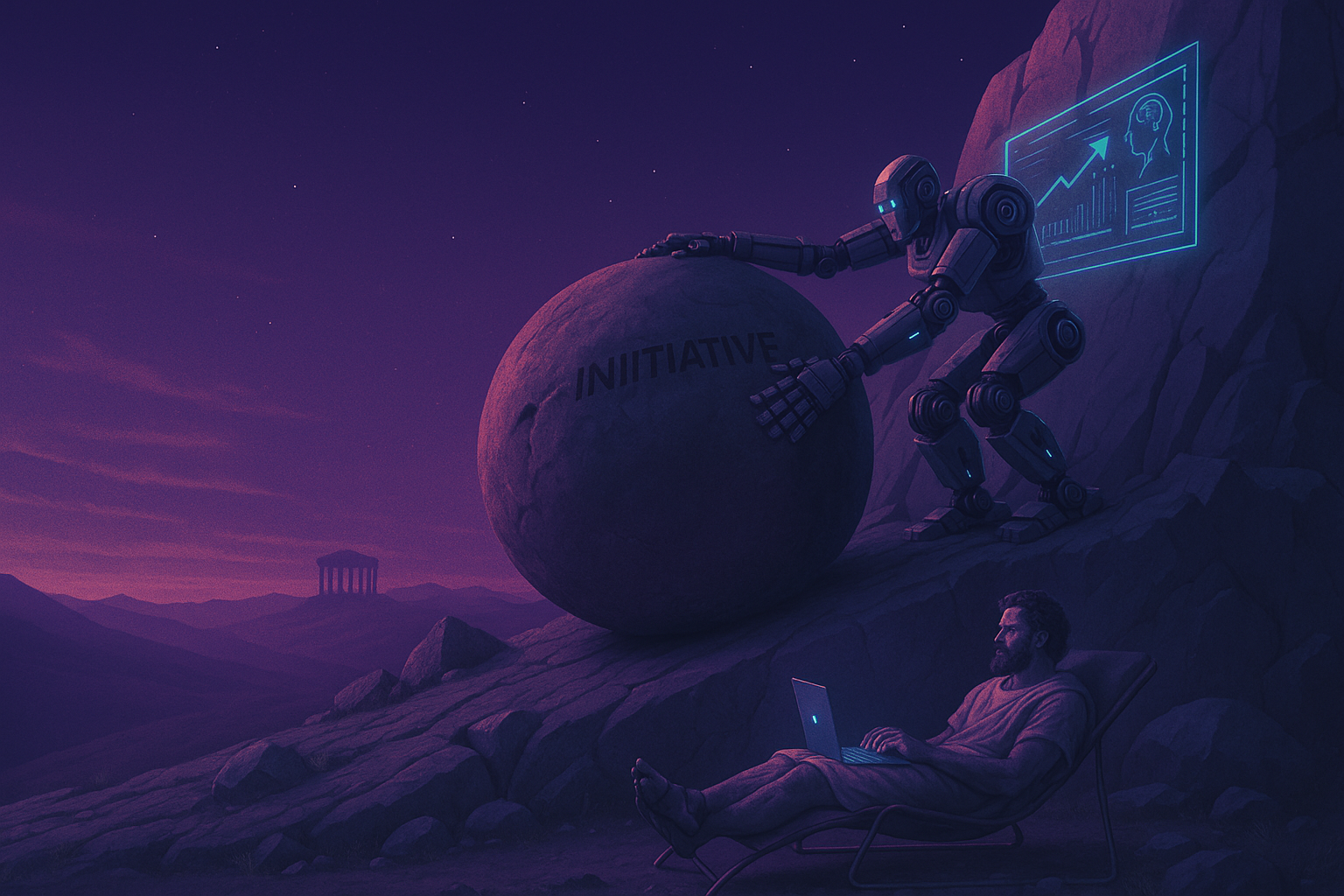The AI Productivity Paradox: Why More Tools Create More Work
Companies are mandating AI tools to boost productivity, but it's creating 'workslop' that costs $9M per 10K employees. Here's how to escape the busy work trap.

TL;DR: Companies (mine included) are forcing AI adoption to save time, but few are monitoring for "workslop". The solution isn't more AI tools but rather an emphasis on time compression principles that force focus and eliminate busy work.
The workslop epidemic
A new HBR study reveals something every leader already suspects: AI tools aren't making us more productive (yet). They're making us busier.
Researchers coined the term "workslop" to describe the flood of low-quality AI-generated content flooding corporate workflows. The numbers are staggering:
- 40% of employees received workslop in the past month
- 15.4% of work received fits the "slop" description
- For a 10,000 person company, the annual cost is estimated at $9 million in lost productivity. Not an insane number but not insignificant.
The emotional toll is real: 53% of recipients feel annoyed, 38% confused, and 22% offended. But here's the kicker: this isn't just about bad AI output. It's about how we're using AI to amplify the wrong behaviors.
Why AI amplifies busy work
The workslop problem reveals a fundamental misunderstanding of what AI should optimize. Most companies are using AI to do more of what they were already doing poorly, rather than doing fewer things better.
I repeat
Most companies are using AI to do more of what they were already doing poorly, rather than doing fewer things better.
Raise your hand if your org has been guilty of this:
- We generate more content (emails, reports, presentations)
- As a result, we schedule more meetings to discuss the content
- This creates more follow-up tasks to refine the content
- Which in return generates even more content to address the follow-ups
This is the opposite of time compression. Instead of focusing on what matters, AI is leading us to do more of what doesn't.
This isn't a new problem, I see it as Parkinson's Law on steroids. Parkinson's Law states that "work expands to fill the time available for its completion." AI doesn't just expand the work; it creates entirely new categories of work that didn't exist before. We're not just filling time anymore; we're creating new time to fill.
The time compression solution
The antidote to workslop isn't better AI tools, it's applying time compression principles to AI usage itself.
Constraint your AI usage:
Set hard limits on AI-generated content. If you can't explain why something needs to exist in 30 seconds, don't create it. Use AI to synthesize your thoughts, not to generate content.
Favor clarity over accuracy:
80% accurate, 100% clear is better than 100% accurate, 10% clear. Your 3 line intro might not be as accurate as a 10 pager of deep research but trust me, nobody will read your 10 pager. Always ask yourself: what is the ONE THING I want to get across?
Call it out:
When you see workslop, call it out. Don't let it fester. Ask for the TL;DR. What is THE ONE THING that is most important to take out of this (at most three things)? The HBR study found that workslop creates a vicious cycle where "recipients feel the stress of having to discuss the issue diplomatically with peers and bosses." Break this cycle by setting clear quality standards upfront.
The executive playbook
Leaders, here's how to pull your organization out of a workslop trap:
-
Audit your personal AI usage as well as your team's: As leaders, our purpose in the organization is to create clarity, help our teams cut through the noise and focus. As such, delivering workslop should be a capital sin and seeing workslop circulate should be unacceptable. Either the person producing it didn't think the work was worth the effort (priorities need to be aligned) or they aren't clear enough about what the takeaway should be (this is when you step in and help in a 1-1).
-
Measure the process, not the output: I mentioned this in another post but it's worth repeating: measure the process, not the output. As a manager, you should ask your team about the thoughtprocess behind the output. This will allow to reduce or redirect the use of AI away from generating content.
-
Focus on time compression: Regarless of AI, encourage your team to think about compressing their work. This is a prioritization effort more than an efficiency one. Once they're clear on the ONE TASK that matters, they can use AI to be more efficient on that task. AI should not be used to justify starting more initiatives in parallel.
The goal isn't to use AI to do more work. It's to use AI to do the right work better, in less time, with fewer people involved.
The bottom line
Workslop isn't an AI problem, it's a workflow problem. Companies are using AI to amplify busy work instead of eliminating it. The solution is to apply time compression principles to AI usage itself: do fewer things, do them better, and measure outcomes instead of activity.
The $9 million question isn't how to make AI better. It's how to make AI work for you instead of against you.
Let's not become a bunch of modern Sysiphuses, having AIs push rocks up a hill for us. Let's break from the curse of the curvy road and focus on doing work that matters.